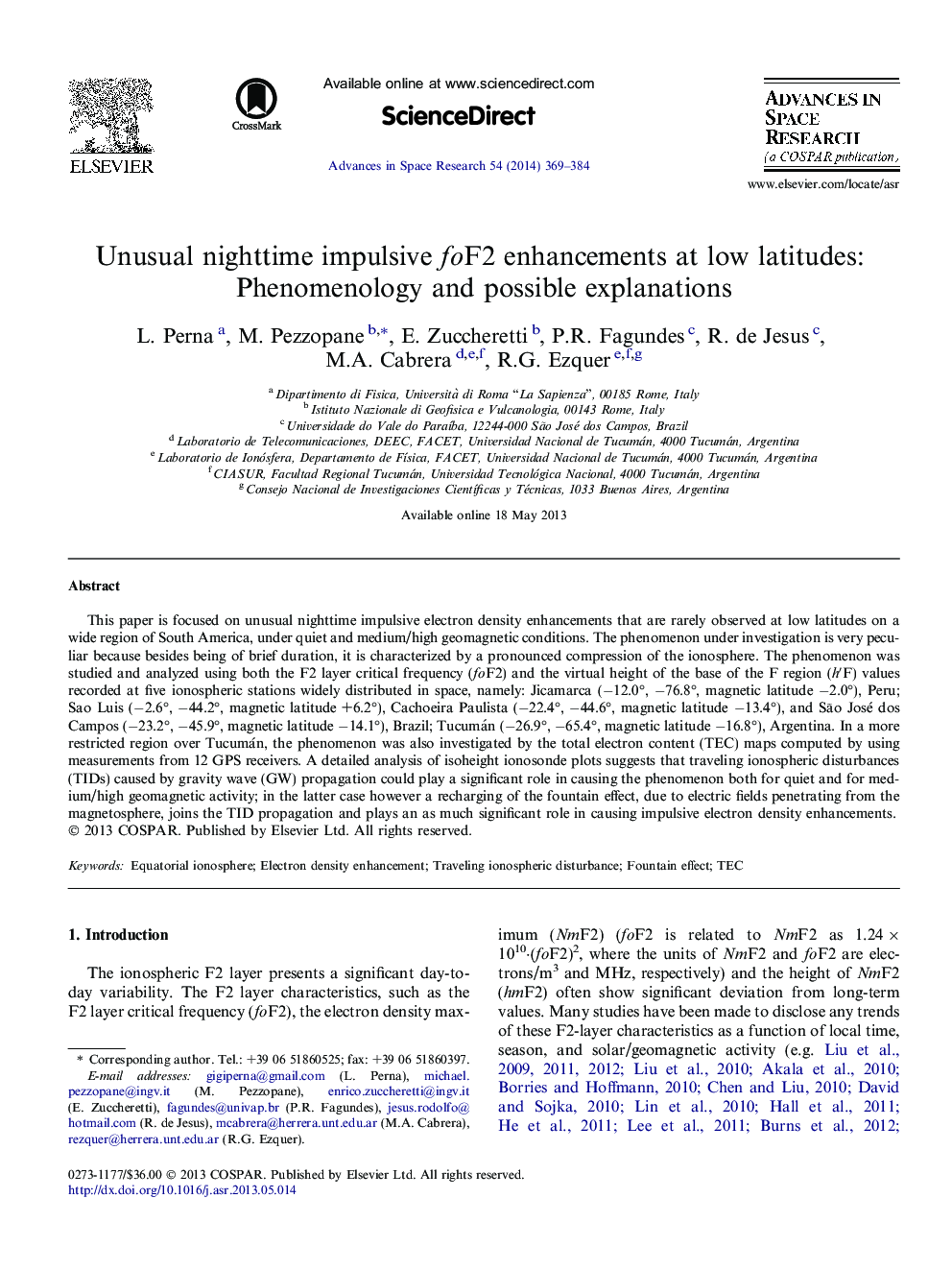| Article ID | Journal | Published Year | Pages | File Type |
|---|---|---|---|---|
| 1764901 | Advances in Space Research | 2014 | 16 Pages |
Abstract
This paper is focused on unusual nighttime impulsive electron density enhancements that are rarely observed at low latitudes on a wide region of South America, under quiet and medium/high geomagnetic conditions. The phenomenon under investigation is very peculiar because besides being of brief duration, it is characterized by a pronounced compression of the ionosphere. The phenomenon was studied and analyzed using both the F2 layer critical frequency (foF2) and the virtual height of the base of the F region (hâ²F) values recorded at five ionospheric stations widely distributed in space, namely: Jicamarca (â12.0°, â76.8°, magnetic latitude â2.0°), Peru; Sao Luis (â2.6°, â44.2°, magnetic latitude +6.2°), Cachoeira Paulista (â22.4°, â44.6°, magnetic latitude â13.4°), and São José dos Campos (â23.2°, â45.9°, magnetic latitude â14.1°), Brazil; Tucumán (â26.9°, â65.4°, magnetic latitude â16.8°), Argentina. In a more restricted region over Tucumán, the phenomenon was also investigated by the total electron content (TEC) maps computed by using measurements from 12 GPS receivers. A detailed analysis of isoheight ionosonde plots suggests that traveling ionospheric disturbances (TIDs) caused by gravity wave (GW) propagation could play a significant role in causing the phenomenon both for quiet and for medium/high geomagnetic activity; in the latter case however a recharging of the fountain effect, due to electric fields penetrating from the magnetosphere, joins the TID propagation and plays an as much significant role in causing impulsive electron density enhancements.
Related Topics
Physical Sciences and Engineering
Earth and Planetary Sciences
Space and Planetary Science
Authors
L. Perna, M. Pezzopane, E. Zuccheretti, P.R. Fagundes, R. de Jesus, M.A. Cabrera, R.G. Ezquer,
